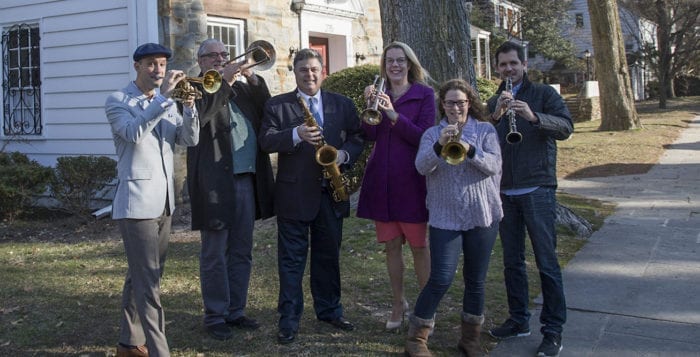New ventures by some Setauket residents will make the area look a little different in the coming years.
The Three Village Community Trust announced plans to clean up Patriots Hollow State Forest and acquire the historic Timothy Smith House.
Patriots Hollow State Forest
The woods that run along Route 25A, across from Setauket’s Stop & Shop, have been the site of many downed trees over the years. The trust announced at its annual meeting March 14 that plans are in the works to clean up the woods and add a trail so people can walk through the forest, something that cannot easily be done in the property’s current state.

Setauket resident and former teacher Leonard Carolan said he walked into the woods one day and was disappointed to see how messy it was, not just because of the trees but the infestation of invasive plants. He approached the New York State Department of Environmental Conservation, Three Village Community Trust President Cynthia Barnes and state Assemblyman Steve Englebright (D-Setauket) to discuss working together to clean up the former farmland.
Those conversations led to the trust signing a stewardship agreement with the DEC. Carolan, the chair of the new stewardship, will steer a committee of 16 people, which will assess the forest’s conditions and seek the community’s input to develop a restoration plan, according to Carolan. He said after gathering wants of the community and addressing concerns, the next step would be to clear 100 feet into the woods and turn to experts to identify the plants and figure out which need to be dug up or trimmed back.
“We want to work it where we have enough clearing that we can plant native trees — the white oaks, the red maples, the black tupelos — and make that into a more native natural forest with a greater variety of trees and habitat,” Carolan said.
The trust also plans to build a split-rail fence with downed locust trees along the 25A side of the property. The committee chair said the work will take years to complete, and the community trust will spearhead fundraising campaigns in the future to fund the project.
Barnes said the trust is excited to join forces with the DEC and to work with Carolan.
“This former farmland in the heart of the Setauket community, devastated by neglect and storms over the years, is in dire need of attention,” Barnes said.

Englebright said he was happy to hear the trust and DEC working together on cleaning up the forest, which he considers an important part of the local landscape.
“I would like to see the community take emotional ownership of the property,” the assemblyman said. “The way you do that is make it accessible. The way you develop good stewardship is have people who are invested in the property — through their ability to walk on trails, to enjoy the natural beauty of the property, to discover its secret. There’s a reason why it’s called ‘hollow.’”
Timothy Smith House
The home known locally as the “house on the hill” was purchased by Robert de Zafra in 2012. Up until his death last October, de Zafra, the trust’s co-founder, was restoring the home that sits on 2.6 acres.
Trustee Robert Reuter reported that de Zafra’s widow, Julia, offered the house to the trust for a nominal price and will donate funds to help with continued restoration. The trust will also create the Robert de Zafra Conservation and Preservation Fund to preserve the house and other community landmarks.
Englebright said the house represents an important part of history in Setauket. The Smiths were among a group from Southold who settled Setauket in 1655 and created Brookhaven town. A clerk once worked out of the home, and it was considered Brookhaven’s town hall for decades. Englebright said de Zafra went to great lengths to ensure the house was protected and preserved, even using his own resources.
“It’s appropriate, I think, for the community trust — which he is a founding trustee of — to carry forward his legacy as well as the legacies of all the others who lived in the house preceding his acquisition of it,” Englebright said.
















